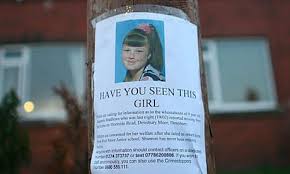
Introduction
In recent years, Karen Matthews has remained a significant figure in discussions around crime, media, and public perception in the UK. Best known for her involvement in the high-profile disappearance of her daughter, Shannon Matthews, in 2008, this case sparked a national outcry and raised questions about parental responsibility, media sensationalism, and the legal system. Understanding the implications of this case is crucial for recognising how societal narratives around crime are shaped and perceived.
The Disappearance of Shannon Matthews
Shannon Matthews, a nine-year-old girl, went missing in February 2008 from her home in Dewsbury, West Yorkshire. The disappearance led to a massive search operation, with Matthews publicly appealing for the safe return of her daughter. The case quickly attracted substantial media coverage, partly due to the dramatic nature of the event and the emotional weight of a mother searching for her child. However, the narrative took a shocking turn when it was revealed that Matthews herself had orchestrated the abduction.
The Revelation and Legal Consequences
In March 2008, following a 24-day search, Shannon was discovered alive in a secret location just a few miles from her home. It emerged that Karen Matthews collaborated with a man named Michael Donovan to stage the kidnapping. Matthews was eventually arrested and faced severe backlash from the public and media alike. In December 2008, she was sentenced to eight years in prison for kidnapping, false imprisonment, and perverting the course of justice.
The Aftermath and Public Reaction
The public reaction to Matthews’ actions was overwhelmingly negative, sparking discussions about the responsibilities of parents and the role of the media in sensationalising crime. The scandal prompted a re-evaluation of guidelines used by the police and media in missing persons cases. There were calls for stricter laws to prevent similar hoaxes and for more accountability from parents in cases of child welfare. In later interviews and documentaries, Matthews portrayed herself as a victim of circumstance, further fuelling public disdain and scepticism.
Conclusion
Karen Matthews remains a controversial figure within the context of UK crime and media discussions. Her case serves as a cautionary tale about the dangers of media sensationalism and the potential for exploitation of public sympathy. As narratives surrounding crime continue to evolve, the case of Karen Matthews highlights the complexities surrounding parental responsibilities and societal expectations. Ongoing debates urge for a more thoughtful approach to parental roles and media ethics in the wake of criminal cases.
You may also like

The Unsolved Case of Charlene Downes: A Tragic Mystery

The Unresolved Case of Charlene Downes
